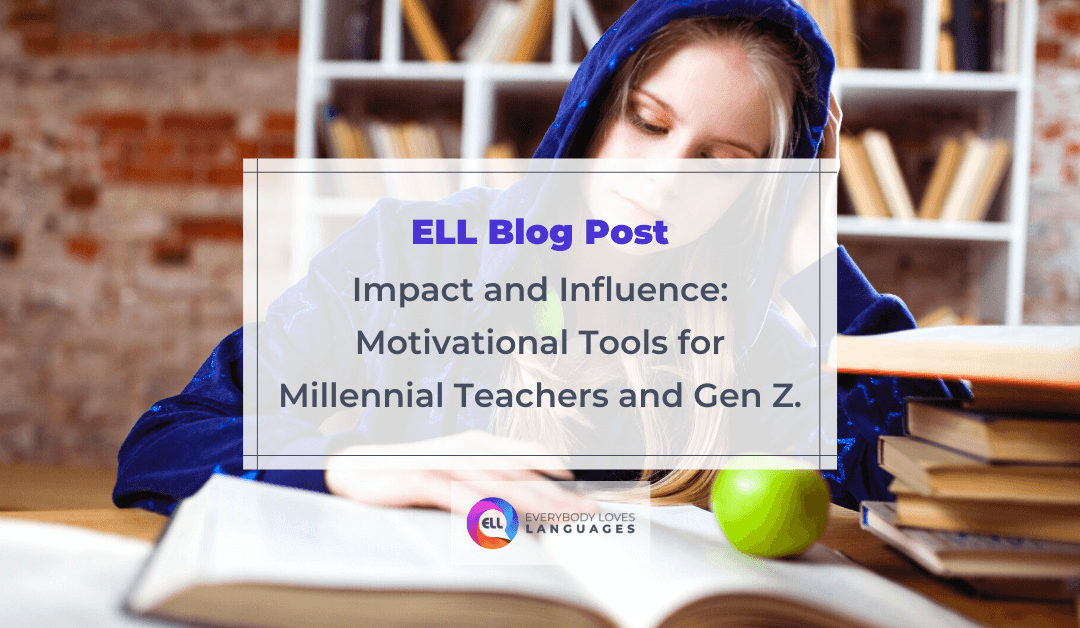Impact and Influence: Motivational Tools for Millennial Teachers and Gen Z
How do generation gaps play out in the classroom? Given that teachers and students can be several generations apart, their beliefs, politics, and values tend to be different. Understanding each other’s views and philosophies will allow teachers to better connect with their students, which is essential for effective learning and classroom management.
Millennials, also known as Gen Y, were born from approximately 1980 to 1995. Generation Z, also called Gen Z, is the generational cohort following Millennials, born between the 1996 and early 2010s. The vast majority of middle and high school students today are part of Gen Z. This generation of students are digital natives, meaning that they have little or no memory of the world as it existed before smartphones, and they came of age at a time when social media already existed. They report higher rates of depression and feel outside-world stressors more acutely compared to previous generations. As an educator, it’s important to recognize that these factors affect how your Gen Z students process information, build trust and establish connections.
Different Generations Require Different Approaches
Gen Z students tend to struggle with behavioural boundaries, especially at the beginning of the year and with deadlines. They crave components of structure but appreciate flexibility when it is offered. Millennials, on the other hand, prefer to create structure themselves and don’t like when people set boundaries for them. If you’re teaching Gen Z students, ensure that you are explicit with classroom rules.
When it comes to discipline, Millennials respond better when discipline is part of a conversation – they want to give their feedback, and they feel validated when their input is solicited. Gen Z students usually respond pragmatically and prefer a matter-of-fact approach. They are not naturally an adversarial group, but they’re likely to become that way or can completely shut down if they perceive the discipline as being aggressive, personal, ongoing, or unfair. If a Gen Z student is struggling in class, for example, don’t call them out unless they’re being disruptive.
An interesting difference between Gen Z and Millennial students is that Gen Z students want to understand how processes work rather than why they exist. An explanation of how to do something helps these students to internalize the benefit of a process or rule and why it’s in place. Explanations for “why” should be kept brief. Millennials typically appreciate a detailed explanation that describes why a given protocol is in place. They like to understand problems and be part of the solutions.
How to Connect with Gen Z Students
Bridging the dynamic generational gap can be challenging for educators. While every student has a different learning style, there are some universal strategies you can apply to help you better connect with all your students.
- Stimulate and expand the minds of your students. It’s important to be inquisitive and get students thinking through the questions you ask.
- Keep it light. Gen Z students tend to get overwhelmed easily, so try to keep conversations light and give students ample time to process new information.
- Test for responsiveness and optimize thought. It’s our job as educators to find out what our students value, what motivates them, and what drives them to enjoy life. Pepper your students with rhetorical questions, examine their body language for signs of receptiveness, and follow up with open-ended questions to build a connection.
- Make sure to CARE when creating assignments. All instructions and assignments should be concise, actionable, recognizable, and e Give students specific tasks, make sure they understand the purpose of each assignment and allow for some flexibility with deadlines.
- Be definite, firm, and unemotional when creating boundaries. Gen Z students tend to respond better to facts rather than emotions. Make sure boundaries are measurable. For example, don’t tell students how disrupting the class makes you feel. Instead, set specific expectations and firmly point out when your expectations are not being met.
Above all, it’s essential that teachers navigate generational differences with sensitivity. Students like to feel respected and validated, and they’ll have difficulty engaging in the classroom when they feel misunderstood. Consider the diverse needs of your students when teaching and try some of the approaches listed above to motivate even the most challenging learners in your classroom.
ELL Webinar Series
Would you like to watch a class about inspiring students? This blog post is a summary of the webinar held in September 2021 for ELL’s Professional Development Learning Series. Every month, we bring renowned instructors to present on a topic relevant to language teachers worldwide. You can watch the full recording here.
And, if you would like to join us for our next webinar, register here. Participants who join the webinar live receive a Certificate of Attendance!




Recent Comments